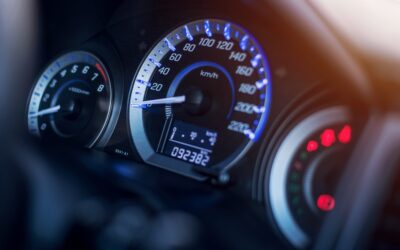It’s very easy to misjudge distance when you’re parking, especially when it’s dark, it’s raining, or if you’re in an unfamiliar area. But car reversing sensors can remove all the guesswork and doubt from parking. They make it possible for any driver to perfectly park every time, and in even the tightest of spaces. So for many drivers, especially new drivers, car reversing sensors are a godsend.
But have you ever wondered how car reversing sensors work? Let’s take a look.

What are Car Reversing Sensors?
Different manufacturers give different names to reversing sensors, such as Park Assist and EPS (Electronic Parking System). But these are just different names for what is essentially the same thing. Really, there are only two different types of reversing sensors; ultrasonic or electromagnetic.
How Do Car Reversing Sensors Work?
Depending on your car, your reversing sensors will either be ultrasonic or electromagnetic. Both sensors work in a similar way by emitting either ultrasonic or electromagnetic waves and monitoring whether waves bounce off any objects behind you and warning you with a beep.
Ultrasonic Parking Sensors
Ultrasonic sensors work by emitting ultrasonic waves in the area behind your car. If there’s anything behind your car, the waves will bounce off the object and back towards your car. Your car’s computer will analyse these waves. It will calculate how far away the object is behind your car based on how quickly the wave returned to the sensor. The faster the wave returns, the closer the object is to your car. The computer will then play a warning noise, usually a beep. And the faster the beep, the closer you are to the object behind you.
Electromagnetic Revering Sensors
Electromagnetic sensors work in a similar way. But instead of emitting ultrasonic waves, they emit electromagnetic waves in an arc behind your car. If anything disturbs this electromagnetic field behind your car, the car’s computer will be able to determine how big and how close the object is behind you. Again, the computer will play a warning sound that will get more intense the closer you get to the object.
Some cars have more advanced reversing sensors that operate using cameras. You’ll see a real-time image of the area behind your car on your dashboard, which you can use to back in or out of spaces and driveways.
Potential Problems With Reversing Sensors
While reversing sensors doubtlessly make reversing easier, they’re not completely reliable.
Both ultrasonic sensors and electromagnetic sensors can struggle to detect smaller objects, and some systems might have issues with moving objects. Also, the sensors themselves can get damaged or dirty, which can make them less effective at detecting obstacles behind you. This is less of a problem with electromagnetic sensors, as they’re usually located within your car’s bumper, whereas ultrasonic sensors are generally mounted on the outside of your car.
Similarly, if your rear view camera gets damaged or dirty – or even if it’s just raining heavily – then you might not get a very good view of the area behind you.
Because of these potential issues, you should never take your reversing sensors for granted. Don’t depend on them entirely. Use your eyes, your common sense, and your best judgement too. And if you’re really struggling to back in or out of a space, if it’s possible to do so, ask someone to help you back out.
Finally, if you’re ever involved in a collision while parking, comprehensive car insurance can cover you for all damages. In this way, a car insurance policy can deliver even more peace of mind than a reversing sensor!



